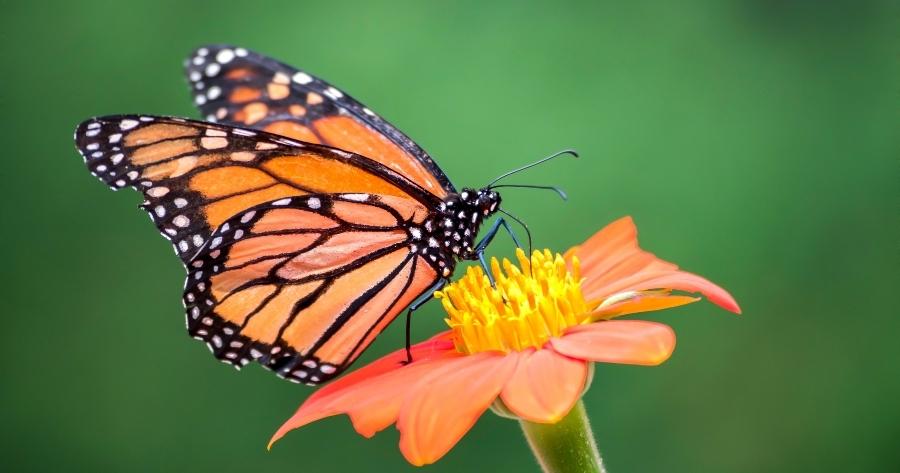
15 Colorful Plants That Invite Bees and Butterflies All Season Long
In every thriving garden, you’ll find a hum of wings and flashes of vibrant color. Bees and butterflies are more than just beautiful visitors; they are essential pollinators that help plants reproduce, increase food yields, and keep ecosystems alive. Without them, much of the world’s natural beauty and food supply would collapse. Yet, their numbers are declining due to pesticides, habitat loss, and climate change.
One of the most effective ways gardeners can help is by planting flowers and shrubs that naturally attract and support these pollinators. Bees are drawn to nectar- and pollen-rich plants, while butterflies seek both nectar sources for adults and host plants for their caterpillars. By planting a variety of species that bloom across different seasons, you can create a living buffet that ensures bees and butterflies visit your garden year-round.
Below, we’ll explore 15 plants that not only beautify your garden but also provide food and shelter for these vital creatures. Each plant is easy to grow and adaptable, making them ideal choices for both beginners and seasoned gardeners.
1. Lavender (Lavandula spp.)
Few plants are as iconic as lavender, with its silvery foliage and fragrant purple-blue spikes. Lavender is both a feast for pollinators and a treat for humans.
Why it attracts pollinators:
Lavender is loaded with nectar, and its tubular flowers are perfect for bees with long tongues. Bumblebees are especially fond of it, and butterflies are often seen hovering gracefully around its blooms. Its strong fragrance, which we love in oils and perfumes, also acts as a signal to pollinators from afar.
Growing tips:
- Lavender thrives in full sun and well-drained soil.
- Avoid overwatering; lavender prefers slightly dry conditions.
- Plant in raised beds or pots if your soil holds too much moisture.
- Prune lightly each year to maintain shape and encourage fresh flowering shoots.
Best varieties for pollinators:
- Lavandula angustifolia (‘Hidcote’ and ‘Munstead’ are classics).
- Lavandula x intermedia (hybrid lavenders with longer spikes).
Garden design idea:
Line a pathway with lavender for a fragrant welcome and a constant source of nectar for visiting bees. When planted en masse, lavender creates a shimmering purple sea that pollinators can’t resist.
2. Sunflowers (Helianthus annuus)
Standing tall and proud, sunflowers are living beacons for pollinators. Their large, golden faces follow the sun across the sky, making them not only visually stunning but also highly productive in the garden.
Why it attracts pollinators:
Each sunflower head is made up of hundreds of tiny florets, each offering nectar and pollen. Bees visit them in droves, while butterflies perch on the petals to sip nectar. As the season progresses, the developing seeds attract finches and other birds, further adding to the life in your garden.
Growing tips:
- Plant sunflowers in full sun and fertile, well-drained soil.
- Water regularly during dry spells, especially in the early growth stage.
- Support tall varieties with stakes to prevent them from toppling over.
Best varieties for pollinators:
- Giant types like Russian Mammoth draw the most attention.
- Smaller, branching varieties like Autumn Beauty provide multiple blooms.
Garden design idea:
Use sunflowers as a backdrop in borders or to create a natural screen. Their tall stature attracts pollinators while adding drama to your garden landscape.
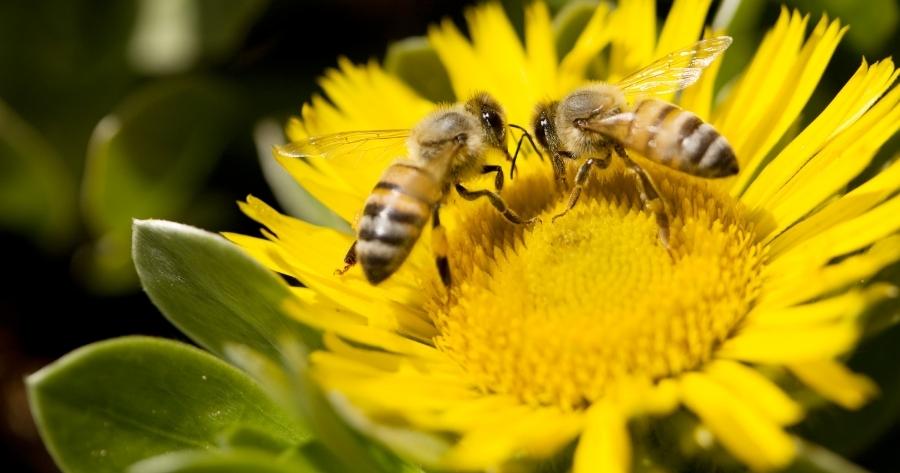
3. Coneflower (Echinacea purpurea)
Coneflowers, also known as echinacea, bring bold color and resilience to gardens. Their daisy-like petals radiate around a spiky central cone, making them as attractive to pollinators as they are to people.
Why it attracts pollinators:
Coneflowers bloom for months, offering a continuous nectar supply during summer. Bees of all kinds; honeybees, bumblebees, and solitary bees—flock to their large centers. Butterflies also adore them, using the broad petals as convenient landing pads.
Growing tips:
- Plant in full sun for the strongest blooms.
- Tolerates drought once established, making it perfect for low-maintenance gardens.
- Deadhead spent flowers to encourage reblooming.
- Leave seed heads standing through winter; birds will feed on them.
Best varieties for pollinators:
- Echinacea purpurea ‘Magnus’ (classic purple-pink blooms).
- Echinacea pallida (pale purple petals with a wildflower look).
Garden design idea:
Mix coneflowers with black-eyed Susans for a vibrant, pollinator-rich prairie-style planting.
4. Bee Balm (Monarda didyma)
True to its name, bee balm is a pollinator powerhouse. With its tubular, shaggy flowers in shades of red, pink, and purple, it’s loved not just by bees but also by butterflies and hummingbirds.
Why it attracts pollinators:
The nectar-rich tubes are ideal for long-tongued bees and butterflies. The bright colors, especially red, also appeal to hummingbirds, adding yet another pollinator to your garden mix.
Growing tips:
- Prefers moist, rich soil and full sun.
- Needs good air circulation to prevent powdery mildew.
- Cut back stems after flowering to encourage regrowth.
Best varieties for pollinators:
- Monarda didyma ‘Jacob Cline’ (mildew-resistant, bright red).
- Monarda fistulosa (wild bergamot, native and pollinator-friendly).
Garden design idea:
Plant bee balm in clumps near patios, you’ll attract pollinators and enjoy its spicy fragrance at the same time.
5. Zinnias (Zinnia elegans)
Zinnias are among the easiest flowers to grow from seed, and they provide non-stop color all summer long. Their bright petals range from bold reds to sunny yellows and soft pastels.
Why it attracts pollinators:
Zinnias are especially beloved by butterflies. Their wide, flat flower heads provide comfortable landing spots, while the abundant nectar keeps pollinators returning daily. Bees also visit them frequently, making them a win-win.
Growing tips:
- Plant in full sun with well-drained soil.
- Direct sow seeds after the last frost for best results.
- Deadhead regularly to keep blooms coming until frost.
Best varieties for pollinators:
- Zinnia elegans ‘Benary’s Giant’ (tall, large flowers).
- Zinnia angustifolia (smaller but long-lasting blooms).
Garden design idea:
Use zinnias to fill in gaps in the garden or grow them in large pots. Their colors make them perfect for cutting gardens, where you can bring pollinator-friendly blooms indoors.
6. Milkweed (Asclepias spp.)
Milkweed is essential for monarch butterflies. While bees enjoy its nectar, monarch caterpillars rely on milkweed leaves for survival, making it one of the most critical plants you can grow for pollinator conservation.
Why it attracts pollinators:
Clusters of star-shaped flowers produce copious nectar, feeding bees, butterflies, and other insects. But its true importance lies in being the sole host plant for monarch caterpillars. Without milkweed, monarch populations cannot survive.
Growing tips:
- Plant in full sun with well-drained soil.
- Once established, it’s drought-tolerant.
- Avoid pesticides, as they can harm monarch larvae.
Best varieties for pollinators:
- Asclepias tuberosa (butterfly weed, with bright orange blooms).
- Asclepias incarnata (swamp milkweed, pink flowers).
Garden design idea:
Dedicate a section of your garden to milkweed, planting multiple varieties to support monarchs through their entire life cycle.
7. Black-Eyed Susan (Rudbeckia hirta)
With their bright golden petals surrounding a dark brown center, Black-Eyed Susans are a quintessential wildflower. They’re resilient, colorful, and beloved by pollinators.
Why it attracts pollinators:
The central cones are packed with nectar and pollen, attracting a variety of bees, hoverflies, and butterflies. The flowers bloom for weeks, providing a long-lasting food source.
Growing tips:
- Thrives in full sun but tolerates light shade.
- Adaptable to many soils, though it prefers well-drained earth.
- Deadhead to extend blooming season.
Best varieties for pollinators:
- Rudbeckia hirta (the common native type).
- Rudbeckia fulgida ‘Goldsturm’ (a garden favorite with vibrant blooms).
Garden design idea:
Mix Black-Eyed Susans with coneflowers for a classic pollinator prairie look; a magnet for bees and butterflies.
8. Joe-Pye Weed (Eutrochium purpureum)
Despite its unglamorous name, Joe-Pye Weed is a powerhouse in pollinator gardens. Its tall stems and fluffy pink-purple flowers stand out in late summer.
Why it attracts pollinators:
Joe-Pye Weed is a butterfly magnet. Its nectar-rich clusters are irresistible to swallowtails, monarchs, and painted ladies. Bees also buzz constantly around its blossoms.
Growing tips:
- Prefers moist, fertile soil and full sun to part shade.
- Can grow tall (up to 6–8 feet), so give it space or plant at the back of borders.
- Cut back in late fall to prepare for new growth.
Best varieties for pollinators:
- Eutrochium purpureum (native to North America).
- Eutrochium maculatum (spotted Joe-Pye Weed, often taller).
Garden design idea:
Use Joe-Pye Weed as a statement plant in pollinator-friendly rain gardens or along stream edges.
9. Goldenrod (Solidago spp.)
Goldenrod is often unfairly blamed for hay fever (which is actually caused by ragweed). In truth, it’s one of the most valuable late-season pollinator plants.
Why it attracts pollinators:
Blooming in late summer and fall, goldenrod provides critical nectar when few other flowers are blooming. Bees, butterflies, and even migrating monarchs depend on it.
Growing tips:
- Thrives in full sun and average soils.
- Tolerates drought and neglect once established.
- Plant native species to avoid overly aggressive hybrids.
Best varieties for pollinators:
- Solidago canadensis (Canada goldenrod).
- Solidago rugosa ‘Fireworks’ (a cultivated variety with arching sprays).
Garden design idea:
Combine goldenrod with asters for a fall pollinator buffet that sustains bees and butterflies before winter.
10. Asters (Symphyotrichum spp.)
Asters are late-season bloomers that bring carpets of purple, pink, and white flowers just as pollinators need them most.
Why it attracts pollinators:
Like goldenrod, asters bloom in late summer into fall, providing nectar and pollen when most plants have finished flowering. Bees, skippers, and migrating butterflies flock to them.
Growing tips:
- Plant in full sun with well-drained soil.
- Divide every few years to prevent overcrowding.
- Deadhead to extend blooming.
Best varieties for pollinators:
- Symphyotrichum novae-angliae (New England aster).
- Symphyotrichum ericoides (heath aster, smaller and compact).
Garden design idea:
Interplant asters with ornamental grasses to create a naturalistic autumn meadow buzzing with activity.
11. Salvia (Salvia spp.)
With their vibrant spikes of blue, purple, or red flowers, salvias are both stunning and pollinator-friendly.
Why it attracts pollinators:
Salvias produce nectar in abundance. Bees love their tubular blooms, and hummingbirds often compete with butterflies for access to the flowers.
Growing tips:
- Plant in full sun and well-drained soil.
- Tolerates drought once established.
- Cut back after flowering for a second flush of blooms.
Best varieties for pollinators:
- Salvia nemorosa ‘Caradonna’ (deep purple spikes).
- Salvia guaranitica ‘Black and Blue’ (a hummingbird favorite).
Garden design idea:
Use salvias in borders or pots, pairing them with coneflowers and lavender for a pollinator-rich display.
12. Phlox (Phlox paniculata)
Phlox is a cottage garden classic, with tall stems topped by fragrant clusters of pink, purple, or white flowers.
Why it attracts pollinators:
The sweet scent of phlox draws in butterflies and hummingbirds, while bees enjoy its nectar-rich blossoms. Its extended bloom time makes it particularly valuable.
Growing tips:
- Prefers full sun to partial shade and moist, rich soil.
- Deadhead to encourage prolonged blooming.
- Space plants well to reduce powdery mildew.
Best varieties for pollinators:
- Phlox paniculata ‘David’ (white blooms, mildew-resistant).
- Phlox paniculata ‘Bright Eyes’ (pink with darker centers).
Garden design idea:
Plant phlox near patios or seating areas so you can enjoy the fragrance while watching butterflies flutter by.
13. Verbena (Verbena bonariensis)
Verbena adds an airy elegance to gardens, with tall stems topped by clusters of small purple flowers.
Why it attracts pollinators:
Butterflies adore verbena, especially monarchs and swallowtails. Bees also frequent its nectar-filled blossoms throughout summer.
Growing tips:
- Plant in full sun with well-drained soil.
- Tolerates drought but performs best with regular watering.
- Deadhead to prolong blooms into autumn.
Best varieties for pollinators:
- Verbena bonariensis (the tall, airy type).
- Verbena rigida (low-growing, compact option).
Garden design idea:
Scatter verbena through borders for a meadow-like effect that encourages butterflies to drift across your garden.
14. Catmint (Nepeta spp.)
Catmint, with its soft gray-green leaves and lavender-blue flowers, is a favorite among pollinators, and cats, too.
Why it attracts pollinators:
Its long flowering season provides nectar from spring through fall, supporting bees continuously. Butterflies are frequent visitors as well.
Growing tips:
- Thrives in full sun and well-drained soil.
- Drought-tolerant and low-maintenance.
- Cut back after first bloom for a second flush.
Best varieties for pollinators:
- Nepeta racemosa ‘Walker’s Low’ (long-blooming and reliable).
- Nepeta faassenii (compact and floriferous).
Garden design idea:
Use catmint to edge walkways or as a soft border plant near roses, it attracts pollinators while deterring some pests.
15. Marigolds (Tagetes spp.)
Marigolds, with their bright orange and yellow blooms, are cheerful additions to gardens and vegetable patches.
Why it attracts pollinators:
While not the top nectar plant, marigolds still attract butterflies and bees. Their strong scent also repels pests, benefiting nearby plants.
Growing tips:
- Plant in full sun with well-drained soil.
- Very easy to grow from seed or bedding plants.
- Remove spent blooms for continuous flowering.
Best varieties for pollinators:
- Tagetes erecta (African marigolds, tall and bold).
- Tagetes patula (French marigolds, compact and bushy).
Garden design idea:
Use marigolds to border vegetable gardens, pollinators will visit, while pests are kept at bay.
Tips For Creating A Pollinator-Friendly Garden
Designing a pollinator-friendly garden is about more than just planting flowers; it’s about creating a thriving ecosystem that supports bees, butterflies, moths, and even other beneficial creatures like hummingbirds and ladybugs. By considering the layout, plant choices, and overall maintenance practices, you can turn your yard into a year-round sanctuary for pollinators. Here are detailed strategies to make your garden irresistibly attractive and sustainable for these essential creatures.
1. Choose a Variety of Plants That Bloom Across Seasons
One of the biggest mistakes gardeners make is planting flowers that all bloom at the same time. While this creates a spectacular show of color for a few weeks, it leaves pollinators without food once the blooms fade.
What to do instead:
- Spring bloomers: Plant early flowers like crocus, snowdrops, and dandelions, which provide nectar when few other plants are available.
- Summer bloomers: Rely on lavender, bee balm, sunflowers, and zinnias for abundant nectar and pollen.
- Fall bloomers: Asters and goldenrod shine late in the season, ensuring bees and butterflies have food before winter.
- Winter considerations: While many pollinators hibernate, planting evergreens and leaving some native plants untrimmed provides winter shelter.
By staggering bloom times, you ensure your garden is alive with activity from early spring until late autumn.
2. Avoid Chemical Pesticides and Herbicides
Chemicals are one of the leading causes of pollinator decline. Even small amounts of pesticide residue can harm bees’ nervous systems, disorienting them and reducing their ability to return to the hive.
Eco-friendly alternatives:
- Neem oil works as a natural insect deterrent.
- Companion planting: Marigolds repel aphids, while basil deters mosquitoes and flies.
- Hand removal: For small infestations, physically removing pests can be just as effective.
- Attract beneficial insects: Ladybugs, lacewings, and predatory wasps keep harmful pests under control without harming pollinators.
When you eliminate or reduce chemicals, you create a safer, healthier environment where bees and butterflies can thrive.
3. Plant in Clusters, Not Singles
Pollinators are more likely to notice and visit plants that are grouped together. A lone flower can be overlooked, while a mass of blooms acts like a neon sign in the garden.
Practical steps:
- Plant at least 3–5 of the same species in one area.
- Create wide patches of flowers instead of scattering them randomly.
- Use drifts of color, such as a whole bed of purple coneflowers—to grab the attention of butterflies from a distance.
This approach not only helps pollinators but also creates a more dramatic and cohesive garden design.
4. Provide Safe Water Sources
Just like humans, pollinators need water. Bees in particular use water to regulate hive temperature and to feed larvae. However, deep water bowls can drown small insects.
How to help:
- Fill a shallow dish or birdbath with clean water.
- Add pebbles, marbles, or floating corks so insects can land safely.
- Change the water daily to prevent mosquitoes from breeding.
- In larger gardens, a small pond with shallow edges can support frogs, dragonflies, and other beneficial wildlife alongside pollinators.
Even a simple saucer of water on a balcony can make a difference for thirsty bees.
5. Add Shelter and Nesting Spots
Pollinators don’t just need food; they also need places to rest, nest, and overwinter.
For bees:
- Leave some bare soil patches, as 70% of native bees nest underground.
- Install a bee hotel made of drilled wood or bamboo tubes to house solitary bees.
- Don’t over-mulch your garden; exposed ground is important for ground-nesting species.
For butterflies:
- Plant host plants like milkweed for monarch caterpillars or parsley for swallowtail larvae.
- Allow shrubs, grasses, and hedges to grow a bit wild—these serve as shelter from wind and rain.
- Piles of leaves or logs in a corner of the yard provide overwintering habitats for many species.
6. Use Native Plants Whenever Possible
While exotic plants can look beautiful, they often don’t provide the right nectar or pollen for local pollinators. Native species have co-evolved with bees and butterflies in your region, making them the most reliable food sources.
Examples:
- In North America, purple coneflower, milkweed, and goldenrod are top choices.
- In Europe, lavender, foxglove, and cornflower are favorites.
- In Africa, aloe and hibiscus are known to attract pollinators.
Research what thrives naturally in your area and prioritize those species. Native plants also tend to be hardier and require less maintenance.
7. Embrace Imperfection in the Garden
A pollinator-friendly garden doesn’t have to be immaculate. In fact, slightly “messy” gardens are often better. Dead flower stalks, leaf litter, and untrimmed hedges provide food and shelter for insects.
What this means for you:
- Don’t rush to cut everything down in autumn. Leave seed heads and stalks standing until spring.
- Allow dandelions and clover to bloom in lawns, they’re excellent early food sources.
- Avoid over-pruning shrubs and hedges.
By relaxing your gardening style, you encourage biodiversity and create a more natural ecosystem.
8. Design with Diversity in Mind
Pollinators come in different shapes and sizes. Bumblebees need larger flowers, while tiny sweat bees prefer smaller blossoms. Butterflies need broad landing pads, while hummingbirds are drawn to tubular flowers.
How to achieve diversity:
- Mix flower shapes: daisies, spikes, clusters, and bells.
- Mix flower colors: bees are drawn to blue, purple, and yellow, while butterflies love red and orange.
- Plant a combination of annuals, perennials, shrubs, and trees to cover multiple layers of the garden.
Diversity ensures that no matter the pollinator, your garden has something for it.
9. Think Beyond Flowers
Pollinator gardens don’t have to stop at blooms. Certain herbs, shrubs, and even vegetables provide nectar and pollen.
Examples:
- Herbs like thyme, oregano, basil, and mint all attract bees when allowed to flower.
- Vegetables like cucumbers, squash, and beans require pollination and feed pollinators in return.
- Shrubs like blueberries and raspberries produce both fruit and nectar-rich blossoms.
This approach allows you to support pollinators while also enjoying a productive edible garden.
10. Connect with the Bigger Picture
Your garden can be part of a larger effort to support pollinator populations in your neighborhood.
Ideas:
- Encourage neighbors to plant pollinator-friendly species, creating a “pollinator corridor.”
- Join local community garden projects.
- Participate in citizen science initiatives that track bee and butterfly populations.
- Share cuttings or seeds of your pollinator-friendly plants with friends and family.
The more connected green spaces there are, the easier it is for pollinators to travel, feed, and thrive.
Conclusion
Creating a pollinator-friendly garden is both rewarding and essential. Bees and butterflies face countless challenges in today’s world, but our gardens can provide safe havens full of nectar, pollen, and shelter. By planting even, a handful of the 15 plants discussed above, you’ll invite life, color, and movement into your space while making a real impact on biodiversity.
Whether you start with lavender by your doorway, sunflowers along a fence, or milkweed for monarchs, every choice matters. And when your garden hums with bees and shimmers with butterflies, you’ll know you’ve created something truly special, not just for yourself, but for the planet.
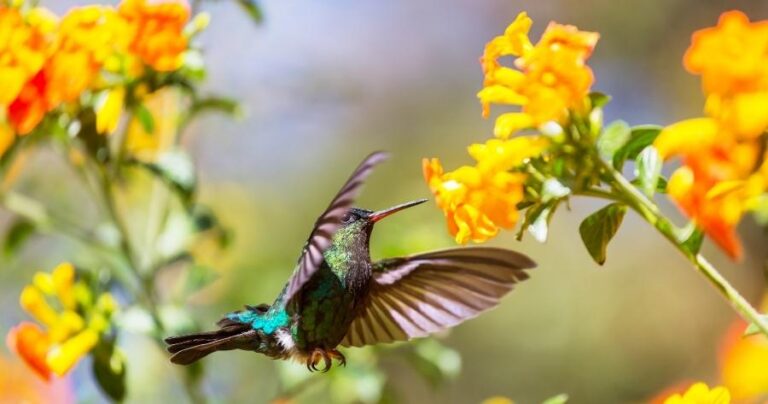
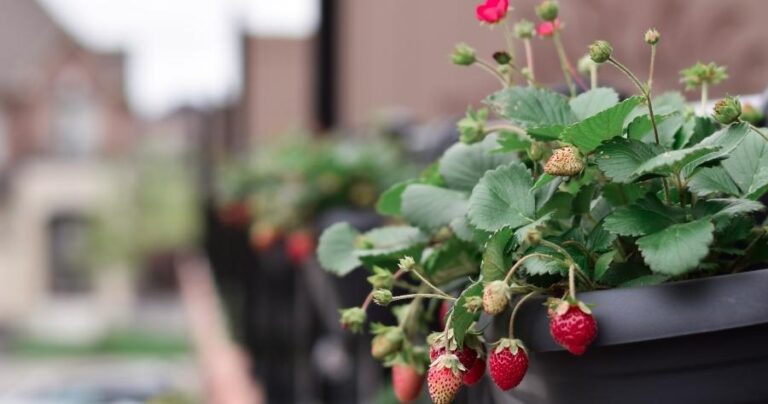
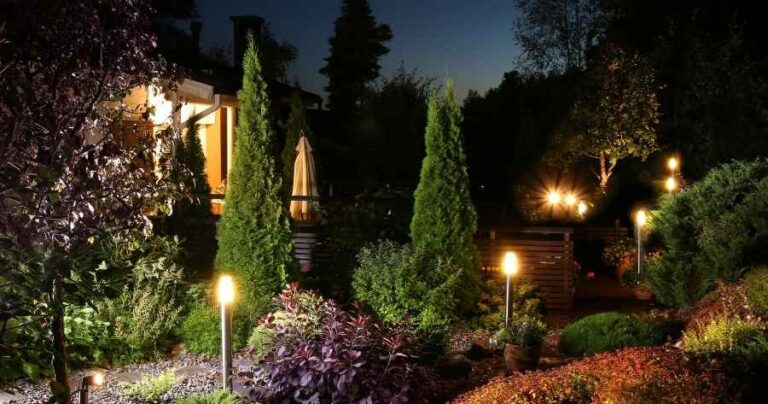


1 thought on “15 Colorful Plants That Invite Bees And Butterflies All Season Long”